“I try not to fall in love with my products” – an interview with designer Fabio Lenci
Fabio Lenci is an incredibly versatile designer. In his long career he has designed, among others, bathrooms, airplanes, household objects and furniture. His designs were displayed in exhibitions around the world. In 2016 he was awarded the prestigious Compasso d’Oro for his career in design. In the 1960s Italian producer Guzzini asked him to design lamps for the company. He lives, and continues to work, in Rome. The following interview was translated from Italian.
-
You were awarded a Compasso d’Oro for your complete works. What does this award mean to you?
“It means a lot to me. I live in Rome where my work is appreciated. Usually designers are working in Milan or at least in the north of Italy, where there is a culture of design. When I started working as a designer nobody thought that in Rome significant results could be achieved. I had to put great effort to enter as a professional in the world of design. But I succeeded, which was a great satisfaction, and after many products and many years of work, I am recognised with a Compasso d’Oro. This gives me great pleasure and satisfaction.”
-
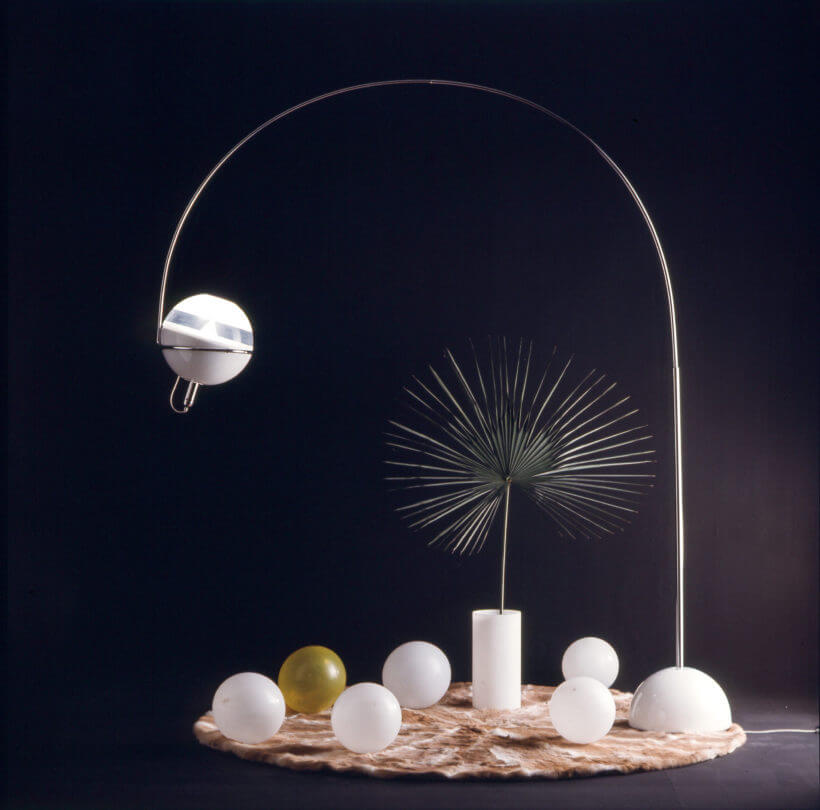
-
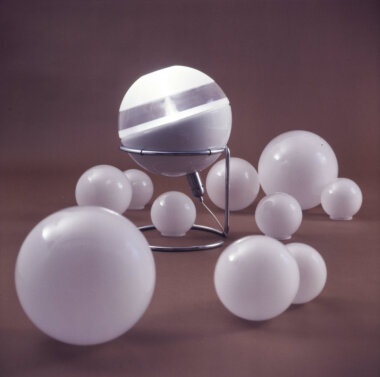 Several variants of Focus; the idea was to have a family of products that could be used from the bedroom to the living room to the kitchen (source: iGuzzini).
Several variants of Focus; the idea was to have a family of products that could be used from the bedroom to the living room to the kitchen (source: iGuzzini).
-
Which was the first lamp that you designed for Guzzini?
“I do not exactly remember which lamp I designed first as it was more than 40 year ago, but maybe it was Focus. Anyhow, I have always liked round shapes. This lamp was special as it could be turned in each direction, like a ball. And in this way you could also adjust the light intensity. I designed a lot of variants: a floor lamp, a table lamp, a bedside lamp etc… I believe I still have one at home.”
-
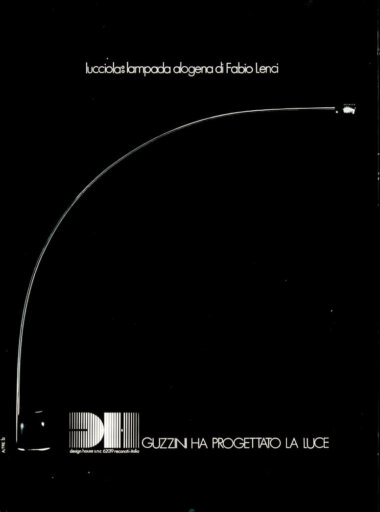 Fabio Lenci was one of the first designers who would use low-voltage halogen light in Lucciola (from the Palainco archive).
Fabio Lenci was one of the first designers who would use low-voltage halogen light in Lucciola (from the Palainco archive).
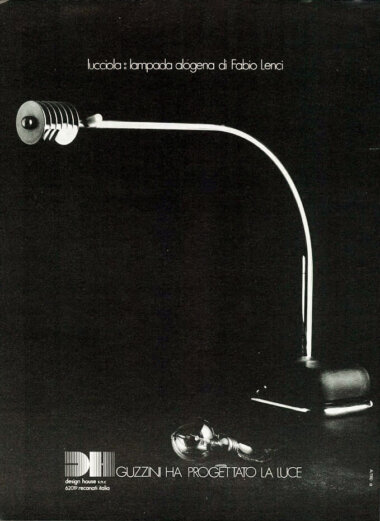
-
You also designed Lucciola. A lamp we like very much, because with its particular shape it was one of the first home appliances to use a halogen light source at low voltage and because it is a nice representative of the space-age era. Where did the idea for this lamp come from?
“When I was working with a projector, I discovered that these lamps have a colour temperature that is really similar to sunlight. That’s why I told iGuzzini that I could make a lamp using a halogen light source. I designed a lamp that was very small, however it produced a lot of heat and that’s why I designed a shade that was very big. This resulted in a lamp that was really different from others.”
-
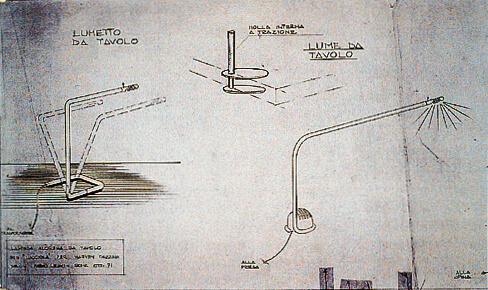 Some early sketches from 1971 for the Lucciola (source: iGuzzini). It was available as a floor lamp, a table lamp and a bedside lamp.
Some early sketches from 1971 for the Lucciola (source: iGuzzini). It was available as a floor lamp, a table lamp and a bedside lamp.
-
Why did you choose the name Lucciola (in English firefly)?
“Because it was a very small light bulb I named it after a firefly. So it was inspired by nature. I like to get in touch with nature, from nature one learns so many things, for instance about aviation and about propulsion systems from certain fishes, but most of all it’s the beauty that nature offers us. The soft things, the round forms that you can find in fruits, the female forms. I also designed a lamp that was very round, which was named after my wife, Birghitta”.
-
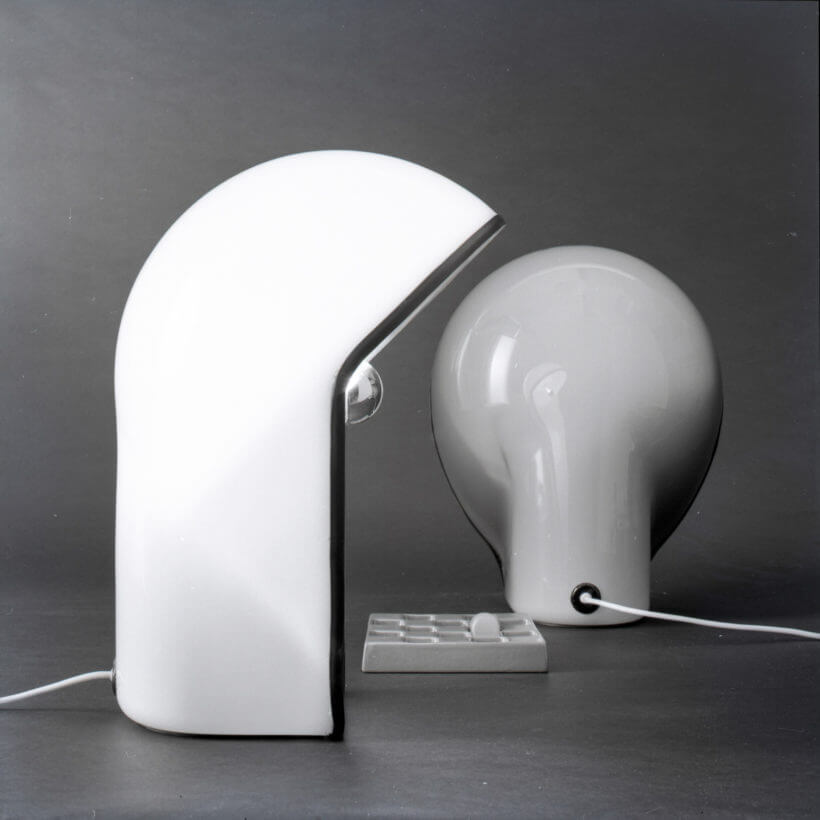 Birghitta table lamp formed from a single plate using thermoformed acrylate, produced from 1972 to 1974 (source: iGuzzini).
Birghitta table lamp formed from a single plate using thermoformed acrylate, produced from 1972 to 1974 (source: iGuzzini).
-
We thought, judging from the shape of the lamp, that Birghitta was a nun.
[laughing out loud] “She isn’t really a nun. She is still a beautiful woman and my wife. But if I think about it a bit longer, maybe you are right, the lamp does resemble a nun a bit”.
“I’ve enjoyed the period, I believe it was for 5 or 6 years, that I worked for iGuzzini. In the meantime I also designed baths for Teuco [Palainco: sister company of iGuzzini]. One of the Guzzini brothers asked me if I could use acrylate, the material that I used for Birghitta, also for other products. That’s how I came up with idea to make baths. At that time it was completely new as baths were made of iron or cast iron. So from my experience with Birghitta arose baths that were made of, like they said, plastic and they were a great success. It was a novelty in the 70s.”
-
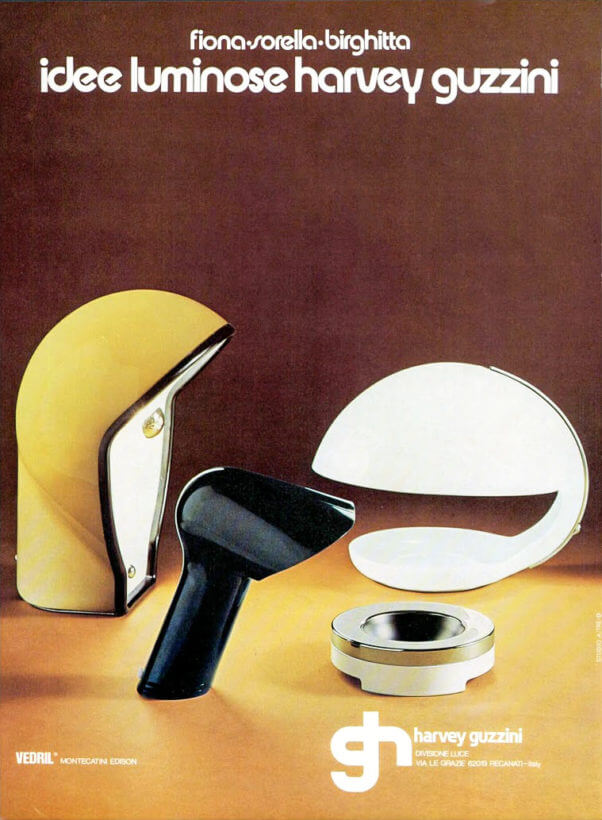
-
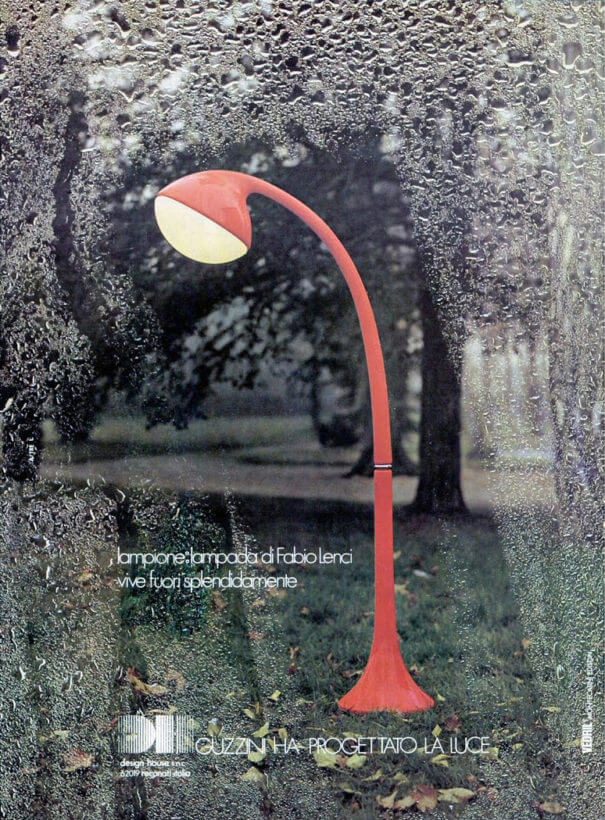 This ad leaves no doubt that the Lampione was originally intended for outdoor usage (from the Palainco archive).
This ad leaves no doubt that the Lampione was originally intended for outdoor usage (from the Palainco archive).
-
Another very special lamp is Lampione, which you designed in 1968. One rarely sees a lamp of that size, it’s more than 2 meters high, and also the material you used is rather unusual.
“Before iGuzzini I worked for Bayer and in this company I used material that was called Baydur. Polyurethane foam with a compact rigid skin, which allowed you to make pure and simple but also very special shapes. I already made some garden furniture and when I started working for iGuzzini I spontaneously thought of this material. So Lampione was the result of an earlier experience, just like with all my other products that I designed later on.”
-
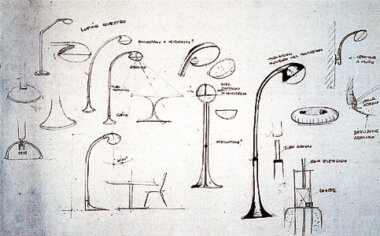 Sketches for Lampione with lots of interesting details on the usage and construction of the lamp (source: iGuzzini).
Sketches for Lampione with lots of interesting details on the usage and construction of the lamp (source: iGuzzini).
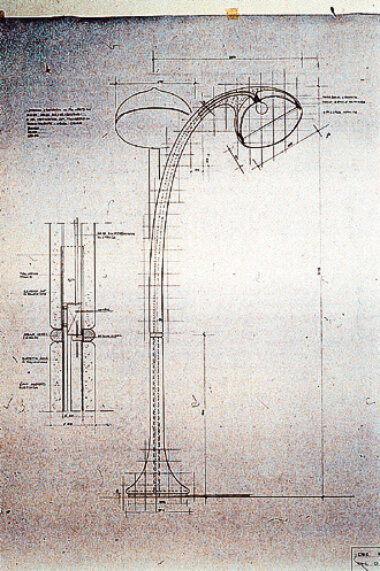
-
“The lamp is called Lampione [Palainco: streetlamp] because I expected that this lamp would be used outdoors, in a garden or along a path. Baydur is especially suitable to use outdoors, if not for the electrical system you could even use it underwater. It is light and water resistant. After a while, iGuzzini asked me if I could design a base so the lamp could also be used indoors. But the lamp is that big as it was intended for outdoor usage.”
Have you only designed lamps for Guzzini?
“No, I have worked for Zumtobel. A friend from Rome, who worked for Zumtobel, asked me to design some office lamps for them. This design was convenient to move and like Focus it was easy to orient in any direction.
I have also worked for a small company in Fermo [Palainco: in the Marches, Italy], which was called Ilform. For this company I have made some designs for bedside lamps. After that Guzzini noticed these lamps they asked me to design for them exclusively.” -
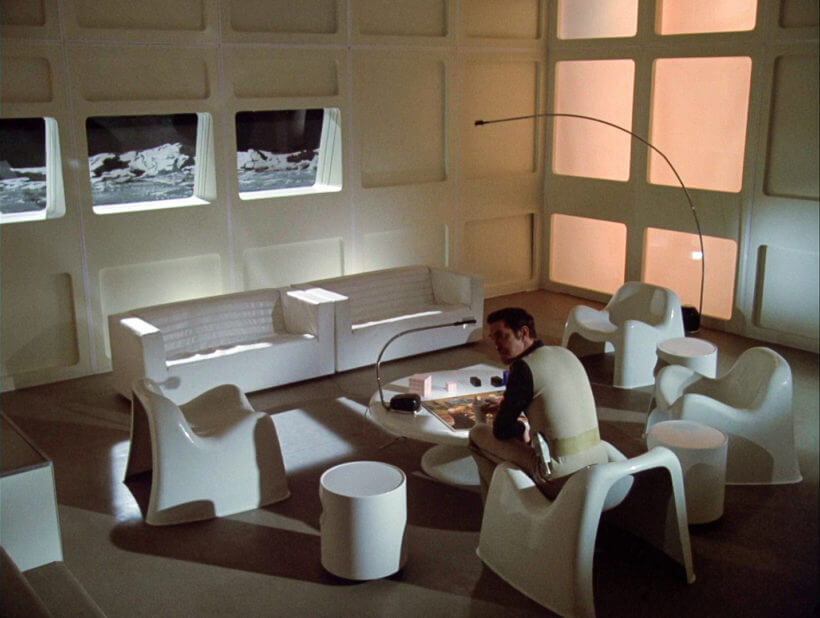 Lucciola floor and table lamp were both used in the TV series Space Brain in 1976 (source: Concept Store).
Lucciola floor and table lamp were both used in the TV series Space Brain in 1976 (source: Concept Store).
-
“You might say it is a coincidence that I have designed so many lamps. It happened that there was a lighting manufacturer that asked me to design lamps. I design on demand, not because I want certain things so badly.”
“Have you read my book Design Amore Mio? I have given the book this title because an industrial product is like the meeting of a father and a mother. I consider the designer to be the father and a company like the mother, as it brings the product to a new phase. When this meeting takes place they produce things, their children, and they continue to produce as long as the relationship works. When the love is over between the designer and the company, they stop producing ‘children’. Without love it does not work. After the 5 or 6 years I worked for Guzzini I fell in love with another woman, Teuco.”
-
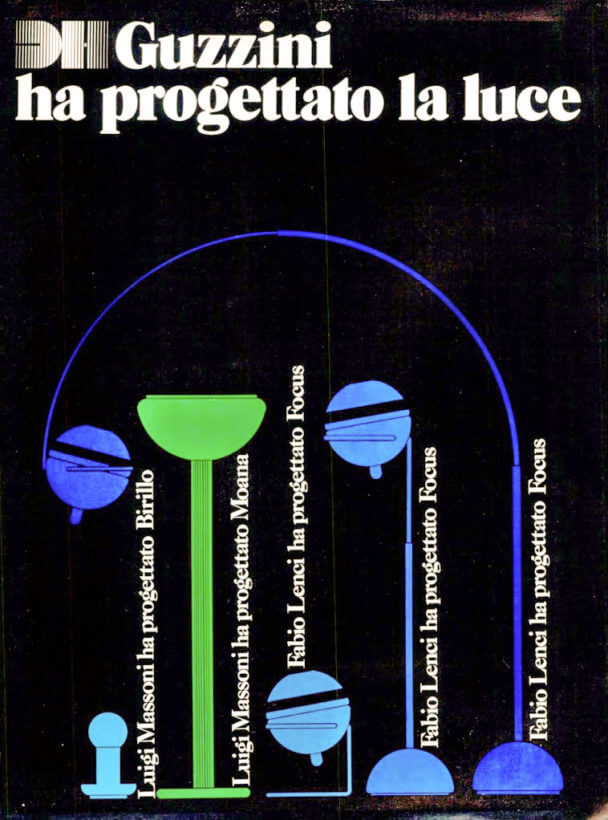 Advertisement for a.o. ‘Focus’, here illustrated as a table lamp and two different floor lamps. It was also available as a wall lamp and a pendant (from the Palainco archive).
Advertisement for a.o. ‘Focus’, here illustrated as a table lamp and two different floor lamps. It was also available as a wall lamp and a pendant (from the Palainco archive).
-
“I try not to love my products, because if I don’t love my products I fall in love over and over again… It happened several times in a museum that I couldn’t recognise a certain product and thought: ‘How beautiful’, only to discover later that it was mine. [Laughs] It happens because I completely detach myself from the products that I make.”
Is this necessary for a designer, according to you?
“It’s necessary to detach oneself from the things you make to see them in perspective. If a person would be too much in love with his own creation, he becomes an artist. A designer should be a professional that serves the industry, the economy, the company. He has to serve them, not himself. I never take anything home that I have made, never. There should always be a request or a need for a product. I develop something that is suitable for that request, I do not make it for myself.”
If you could choose to have one of your lamps in production again, which one would you choose?
“Nice question! Well, like I said I’m not in love with my own products. I am in love with people who love my products. But if I would have the possibility I would choose Lampione”.
-
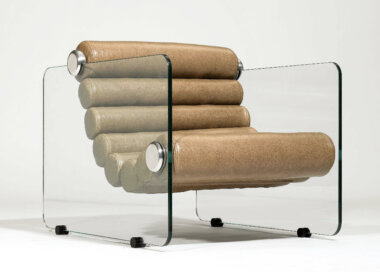 Fabio Lenci has designed everything, from everyday home design items, to even products for the yachting industry. Here you see the Tendig chair that has been produced by Hyaline (source: Koller) and one of the many baths he designed for Teuco Guzzini (source: Archivio Fimag).
Fabio Lenci has designed everything, from everyday home design items, to even products for the yachting industry. Here you see the Tendig chair that has been produced by Hyaline (source: Koller) and one of the many baths he designed for Teuco Guzzini (source: Archivio Fimag).
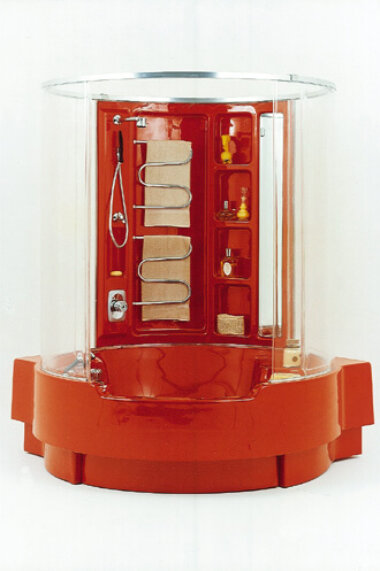
-
You have designed many products in so many different fields, such as baths, boats, a sauna, lamps. Do you agree with Massimo Vignelli when he said: “If you can design one thing, you can design everything”?
“I have made thousands of plans and I have designed approximately 700 realised products. A designer can create everything if he uses the right method. He has to make observations, has to have knowledge of material and techniques, has to be familiar with the market and has to know his team. Like I said earlier, it is like a marriage. When a person asks me to create a product I start with getting to be acquainted with that person. Take him out for lunch to talk about maybe politics, women, nature. Everything in order to understand if that person is open for this project. And from all this information, the product derives.”
Are you still working?
“Yes, that is what keeps me sharp. You can continue to do this this as long as your brain is capable of developing new ideas. It is important not to stop, not even temporarily, as after that it becomes harder to re-start. At this moment I am still busy making new plans, which concerns my family as I have the tendency to invest all my money in products in order to have them realised.”
Could you tell us a bit more about the project or projects you are currently working on?
“At this moment I am really engaged by an airplane, which is very innovative and which I have never done before. This project requires much expertise, many people and financial sources. But I am also working on other projects that have to do with the climate changes and political problems. The world is changing, and one also has to contribute to these fundamental issues.“
-
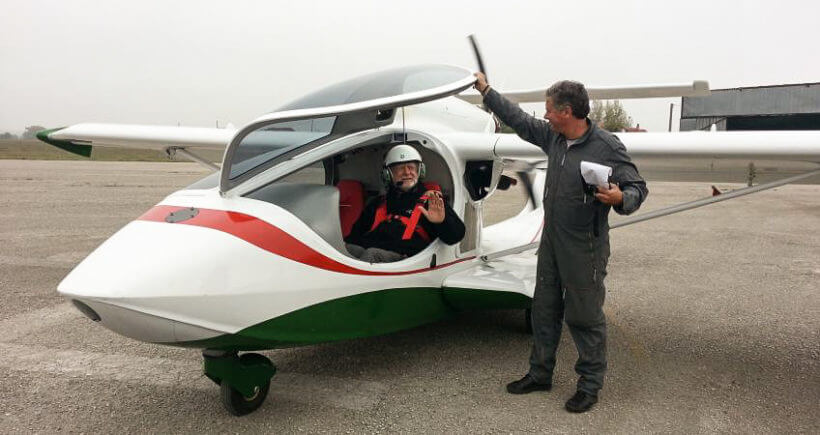 Fabio Lenci, LSA pilot and formerly a military pilot in his own lightweight amphibious aircraft (FL08) that combines performance, design and safety (source: Fabio Lenci).
Fabio Lenci, LSA pilot and formerly a military pilot in his own lightweight amphibious aircraft (FL08) that combines performance, design and safety (source: Fabio Lenci).
-
If you would like to be the first to read articles on designers and special designs, please subscribe to our newsletter.
-
- Palainco wishes to thank: Fabio Lenci, iGuzzini: Piergiovanni Ceregioli and Tiziana Scocco.
Unless otherwise stated, all material is sourced and/or generated internally. All rights reserved.
- Text: Palainco, Koos Logger & Ingrid Stadler.
- Image sources: Fabio Lenci, Archivio Fimag, iGuzzini, Koller, Concept Store & the Palainco Archive.
The article and its contents may not be copied or reproduced in any part or form without the prior written permission of the copyright holders.
Published on: 22 February 2017